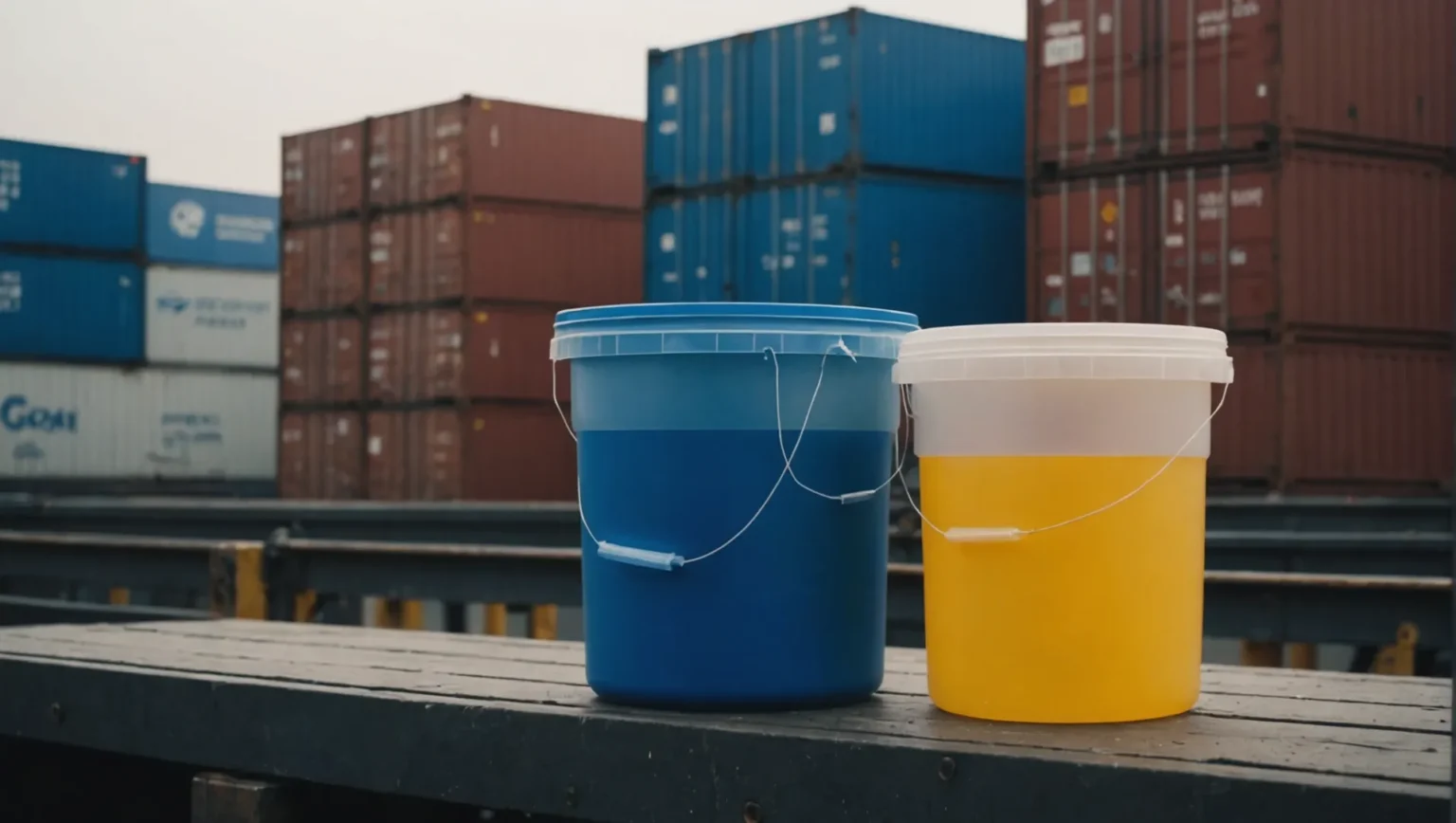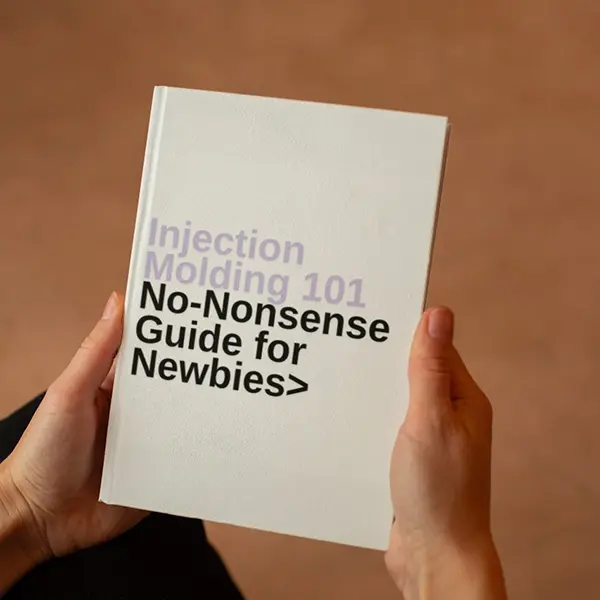
Navigating the world of plastics can feel overwhelming, but understanding the nuances of each type can empower you to make better choices for your projects.
Polypropylene and polyethylene, two widely used plastics, have unique properties that make them suitable for different applications. Polypropylene is known for its hardness and heat resistance, while polyethylene excels in flexibility and waterproofing. The choice between them depends on the specific requirements of your project.
While this initial overview gives a quick snapshot, the real magic lies in the details. Let’s dive deeper into what sets these two materials apart.
Polypropylene is more flexible than polyethylene.False
Polyethylene is more flexible, making it ideal for films and packaging.
What Are the Environmental Impacts of Polypropylene and Polyethylene?
Understanding the environmental impacts of plastics is crucial in addressing sustainability challenges.
Both polypropylene and polyethylene pose environmental concerns, primarily due to their persistence in ecosystems. They contribute to pollution when improperly disposed of, as they degrade slowly and can harm wildlife. Efforts in recycling and improving production processes aim to mitigate these impacts.

The Persistence Problem
Polypropylene (PP) and polyethylene (PE) are both durable, which makes them valuable in many applications but also problematic environmentally. Their durability means they don’t easily biodegrade, leading to long-lasting pollution in land and marine environments. This persistence can harm wildlife that ingest or become entangled in plastic debris.
Recycling Challenges
Polypropylene
PP is recyclable, but its recycling rates are relatively low compared to other plastics. This is due to the difficulty in sorting and the economic viability of the recycling process. Innovations in recycling technology are being explored to improve this, including the use of advanced sorting systems and chemical recycling methods.
Polyethylene
PE, especially its high-density form (HDPE), is more widely recycled. Its simpler polymer structure makes it easier to break down and reuse. However, not all PE products end up being recycled due to contamination issues and lack of facilities in certain regions. Efforts are being made to enhance collection systems and encourage consumer participation in recycling programs.
| Plastic Type | Recyclability | Common Challenges |
|---|---|---|
| Polypropylene | Moderate | Sorting, Economic Viability |
| Polyethylene | High | Contamination, Facility Availability |
Innovations and Alternatives
Recent developments focus on creating biodegradable alternatives or enhancing the recyclability of PP and PE. Bioplastics and composites that blend natural fibers with PP or PE are being researched as more sustainable alternatives. These innovations aim to reduce dependency on fossil fuels and decrease the environmental footprint.
Energy Consumption in Production
The production of both PP and PE involves significant energy use, which contributes to greenhouse gas emissions. Research1 into more energy-efficient production processes is ongoing, with some companies investing in renewable energy sources to power their operations.
The Role of Policy and Regulation
Government policies play a crucial role in managing the environmental impacts of plastics. Many countries are implementing stricter regulations on plastic production and disposal, promoting the use of recycled materials and setting targets for reducing plastic waste. Public awareness campaigns are also vital in encouraging consumers to make more sustainable choices.
Ultimately, while both polypropylene and polyethylene have their benefits in various applications, understanding their environmental impacts is essential in making informed decisions about their use and disposal.
Polypropylene is more recyclable than polyethylene.False
Polyethylene, especially HDPE, is more widely recycled than polypropylene.
Both PP and PE production contributes to greenhouse gas emissions.True
The production of PP and PE involves significant energy use, leading to emissions.
How Do Polypropylene and Polyethylene Perform in Food Safety?
In the realm of food safety, selecting the right plastic can significantly impact consumer health and product integrity.
Polypropylene (PP) and polyethylene (PE) are both non-toxic plastics approved for food contact. PP is favored for its rigidity and heat resistance, making it ideal for containers used in heating. PE is valued for its flexibility and moisture resistance, perfect for packaging that requires durability and waterproofing.

Understanding Polypropylene in Food Safety
Polypropylene is a non-toxic, odorless plastic that adheres to the stringent safety standards for food contact materials. Its high melting point, around 160°C to 170°C, ensures that it can endure the temperatures typically encountered in microwave heating. This property is why it’s commonly used in manufacturing microwaveable containers and hot beverage cups.
- Applications in Food Packaging: Polypropylene’s rigidity and impact resistance make it suitable for containers that must maintain their shape under stress. This includes items like yogurt tubs, margarine containers, and bottle caps.
- Chemical Resistance: Its ability to withstand most acids, alkalis, and salts without degrading makes polypropylene an excellent choice for storing a variety of food products without risk of contamination.
Examining Polyethylene’s Role in Food Safety
Polyethylene is another non-toxic plastic commonly used in food packaging. It’s renowned for its flexibility and barrier properties against moisture, which are critical factors in preserving the freshness of foods.
- Cold Storage: Thanks to its low-temperature resilience, polyethylene is ideal for frozen food packaging. It remains pliable even when exposed to sub-zero temperatures, ensuring the integrity of the seal and protection against freezer burn.
- Waterproof Packaging: PE’s superior moisture barrier capabilities prevent water vapor from penetrating the packaging, making it a preferred choice for products like fresh produce bags and moisture-proof films.
Comparison Table: Polypropylene vs. Polyethylene in Food Safety
| Property | Polypropylene (PP) | Polyethylene (PE) |
|---|---|---|
| Toxicity | Non-toxic | Non-toxic |
| Heat Resistance | High (suitable for microwaves) | Low |
| Flexibility | Rigid | Highly flexible |
| Moisture Resistance | Moderate | High |
| Low Temperature Use | Limited | Excellent (ideal for frozen foods) |
In conclusion, both polypropylene and polyethylene offer distinct advantages depending on the specific needs of food safety applications. While PP is advantageous for heated applications due to its heat resistance, PE provides unparalleled flexibility and moisture resistance, making it indispensable in packaging environments that demand these attributes.
Understanding these properties2 ensures that manufacturers can make informed decisions tailored to their product requirements.
Polypropylene is suitable for microwave use.True
Polypropylene's high melting point allows it to withstand microwave temperatures.
Polyethylene has poor moisture resistance.False
Polyethylene has excellent moisture barrier properties, ideal for waterproof packaging.
Which Plastic Is More Cost-Effective for Manufacturing?
When it comes to manufacturing, cost-effectiveness is a crucial factor. So, which plastic offers more bang for your buck?
Polypropylene often edges out polyethylene in cost-effectiveness for manufacturing due to its robust physical properties and recyclability. While initial costs might be comparable, polypropylene’s durability and reusability can lead to lower long-term expenses, especially in high-wear applications.

Understanding Material Costs
The initial cost of raw materials is often the first consideration in assessing cost-effectiveness. Both polypropylene and polyethylene3 are affordable plastics, but their prices can fluctuate based on market demand and oil prices.
Price Comparison Table:
| Material | Average Cost (per kg) |
|---|---|
| Polypropylene | $1.20 |
| Polyethylene | $1.10 |
Though prices are similar, it’s important to consider other factors beyond just the raw material cost.
Processing Efficiency
Polypropylene:
- Higher Hardness and Rigidity: These attributes reduce breakage during production, leading to fewer defects and less waste.
- High Melting Point: This characteristic provides versatility in processing methods like injection molding, which can increase efficiency.
- Recyclability: The ability to recycle polypropylene products means that manufacturers can reuse materials, lowering overall material costs.
Polyethylene:
- Good Flexibility: This reduces stress on machinery, potentially decreasing maintenance costs.
- Simpler Processing Techniques: While it may incur lower upfront processing costs, the potential for increased waste due to lower strength should be considered.
Application-Specific Considerations
Choosing between these plastics often comes down to specific application requirements. For example, polypropylene’s higher heat resistance4 makes it ideal for products exposed to high temperatures, potentially increasing its lifespan compared to polyethylene alternatives.
Case Study: Packaging Industry
In the packaging sector, the flexibility and waterproof nature of polyethylene are invaluable for products like plastic films. However, polypropylene’s robustness is preferred for containers that require heat resistance, such as those used for microwaveable foods.
Longevity and Lifecycle Costs
While polyethylene might offer lower initial costs, polypropylene’s greater durability and recyclability can lead to reduced lifecycle expenses. This is particularly evident in industries where product longevity is critical, such as automotive or industrial applications where high strength and impact resistance are necessary.
In conclusion, both materials have their merits, but understanding your specific application requirements can help in determining which plastic is truly more cost-effective.
Polypropylene is more cost-effective than polyethylene.True
Polypropylene's durability and recyclability lead to lower long-term costs.
Polyethylene has a higher melting point than polypropylene.False
Polypropylene has a higher melting point, offering versatile processing.
Are There Any Health Risks Associated with These Plastics?
Understanding the health risks of plastics like polypropylene and polyethylene is crucial for consumers and manufacturers alike.
Polypropylene and polyethylene are generally considered safe for consumer use, especially in food packaging. However, concerns exist regarding their additives and environmental impact if not properly managed. Awareness and responsible disposal are key to mitigating potential health risks.

Understanding the Safety Profiles of Polypropylene and Polyethylene
Both polypropylene (PP) and polyethylene (PE) are commonly used in consumer products, including food packaging, household goods, and medical supplies. Their widespread use raises questions about their safety and potential health risks.
Chemical Composition and Safety
- Polypropylene: PP is a non-toxic, tasteless plastic that complies with safety standards for food contact materials. It has good chemical resistance, making it unlikely to leach harmful substances under normal conditions.
- Polyethylene: PE shares similar properties with PP in terms of being non-toxic. Its chemical stability ensures that it does not easily degrade or react with other substances, reducing the likelihood of releasing harmful chemicals.
Potential Health Concerns
Despite their inherent safety, certain considerations must be kept in mind:
-
Additives in Plastics: Both PP and PE may contain additives to enhance properties like flexibility, color, or durability. Some additives, such as phthalates or bisphenol A (BPA), have been linked to health issues. It is important to ensure that products are free from harmful additives by checking labels or certifications.
-
Microplastics: Over time, plastic products can degrade into microplastics. These tiny particles are found in various environments, including oceans and food chains. The health implications of microplastics are still being researched, but they pose a potential risk if ingested.
Managing Health Risks
To mitigate any potential health risks associated with polypropylene and polyethylene:
- Choose Certified Products: Opt for products labeled as BPA-free or phthalate-free to avoid harmful additives.
- Proper Disposal and Recycling: Prevent environmental contamination by recycling plastic waste correctly.
- Stay Informed: Keep abreast of new research on plastic safety5 to make informed decisions.
Understanding the nuances of these materials helps ensure their safe use across various applications without compromising health or environmental integrity.
Polypropylene is non-toxic and tasteless.True
Polypropylene complies with safety standards for food contact materials.
All additives in plastics are safe for health.False
Some additives like BPA and phthalates are linked to health issues.
Conclusion
Understanding the distinct properties of polypropylene and polyethylene is essential in selecting the right material for your needs.
-
Discover innovative ways to reduce energy consumption in plastic manufacturing.: Davis-Standard manufactures high-performing, energy-efficient polymer processing technologies and components that involve a combination of … ↩
-
Explore detailed comparisons to aid in material selection.: Polypropylene is FDA-approved for food contact and also has a high heat tolerance. It is known to be a safer alternative to most other plastics. ↩
-
Compare the price trends of these two plastics.: Polypropylene costs about $0.55-0.80 per kilogram while polyethylene costs about $0.80-1.60 per kilogram. The actual cost depends on the … ↩
-
Learn how heat resistance impacts polypropylene’s durability.: Polypropylene’s combination of durability, flexibility, and exceptional heat resistance often makes it the go-to material for demanding applications. ↩
-
Explore recent studies on plastic safety to stay informed.: Cons of Polypropylene · Cancer · Asthma · Hormone imbalances · Developmental delays · Reproductive problems. ↩








